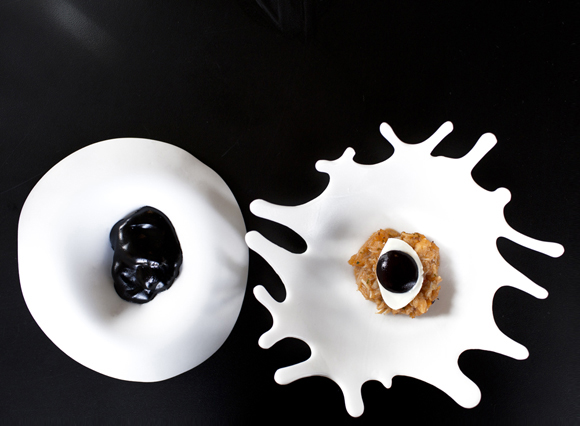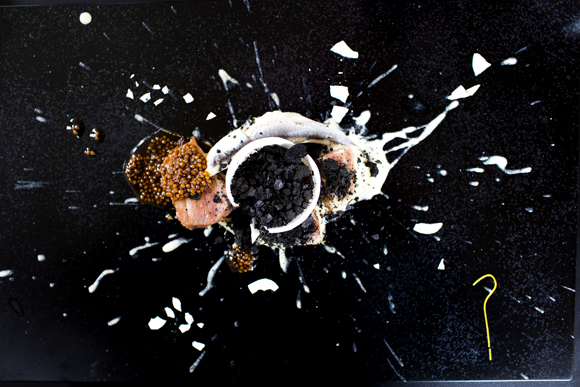As part of a project for the Holburne Museum Bath, I am collaborating with fellow Bath Spa MA Ceramicists to create an event highlighting the increase in ‘ready to go’ packaging and a decrease in ceramic tableware. We have each chosen a ‘ready to go’ food product and are creating ceramic works to display this specific food.
For my work I have chosen jelly. Jelly was a very decadent food, served only to the rich and always set in exciting moulds. These moulds were originally ceramic products before cheaper metal moulds came along.
Initially I had been taking disposable packaging commonly associated with off the shelf eating and using vacuum forming to create new moulds. This process responds to how the original moulds were made.
However, I then went to The Georgian Museum, Bristol and found some very decadent (albeit copper) jelly moulds. These moulds reminded me that jelly was about showing off, impressing your guests; so I had to start thinking about how I could make my ceramic piece much more decadent.
It seems from the mould forms above that jelly moulds commonly have a tiers/layers of adorned columns or crenelations like crowns/castles. So I needed to achieve a certain about of tiering in my work.
I therefore started with the basic forms of preexisting disposable packaging and started to stack them in a range of compositions.
Making individual slip cast versions of these forms enabled me to stack and reconfigure the forms so that they were never repeated; a one off being more decadent that a mass produced object perhaps. The results so far, are documented in the following image.

I begin also to squish and crush some of the parts to acknowledge the disposable nature of the original packaging. Some compositions are more successful than others; all of them appearing slightly futuristic. What is pleasing about these pieces is that they can be stacked on top of each other, permitting a range of different compositions.
However, I felt like this method was slightly too simple and a bit obvious. I started to explore about how else I can make moulds with the limited resources I have over the summer. Without being able to mould plastic my only other option was to form my mould directly from plaster.
I used a hammer and chisel and cut away parts of surplus plaster moulds, leaving raw exposed areas. Once slip cast these chiselled parts came to look like rock.
That reminded me immediately of stone carved architecture and particularly pillars – the ultimate plinth. The first four images were taken in Gerona and document how decadent pillars were made. The second four are images of pillars found on the Holburne Museum building. Generally a very decorative capital (the top part) a semi decorative plinth (the lower part) and always a fairly simple middle part. This process of making pillars has inspired me to create my ceramic jelly plinth in a similar style, with a semi plain middle and decadent plinth and capital.
As with pillars the middle sections were commonly made from a series of stones carved to appear as one, so too will my piece. It seems much more simpler to now ignore the vast range of disposable food packaging and stick with the plastic tub that holds the ‘ready to go’ jelly. From this simple form I can create height by stacking and decadence through vacuumed formed plastic and chiseling at plaster.
LINDA BROTHWELL – The Missing
An exhibition at the Holburne Museum in where figures were removed from their marble plinths. Shots of decadent candelabra’s from the Holburne collection.



















































































